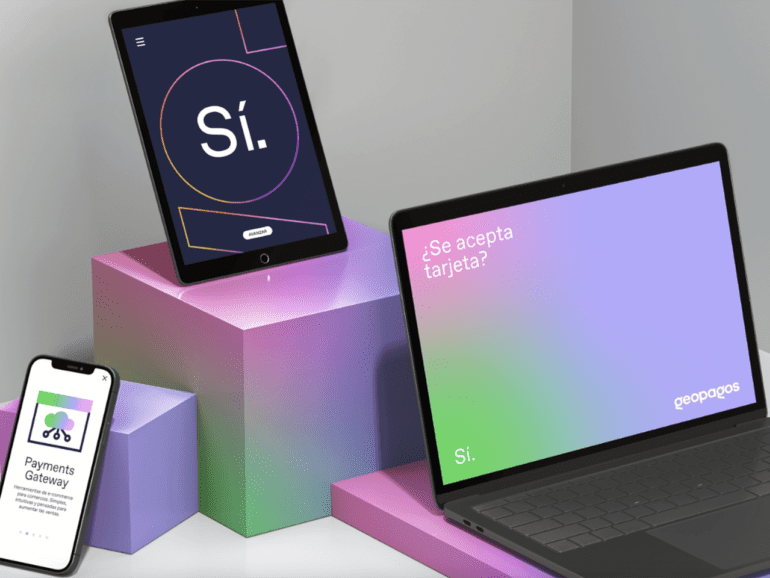Banking as a service, a term hardly known years ago, is growing fast in Latin America, with many financial technology startups securing funding to build the necessary foundations for the next wave of digitization.
Even in a context of falling valuations, B2B fintech companies that provide banking infrastructure continue to scale on the back of investment capital. Last month, Geopagos, an infrastructure-as-a-service provider, left its bootstrap status and took $35 million in funding to grow aggressively into Brazil.
The pandemic has been a massive driver of digitization. The strong demand for online financial services provides a sizeable opportunity for tech-driven companies to craft the required infrastructure.
Geopagos, a payments-as-a-service provider, caters to sizeable financial technology companies and banks in the region. The company is headquartered in Buenos Aires but has clients across 15 regions.
Expansion plan
The company had an expansion plan through Latin America from day one, Sebastián Núñez Castro, its CEO and a co-founder in 2013, told Fintech Nexus. The firm is now looking to consolidate its position in Latin America’s largest economy.
The region has been underpenetrated in banking, loans, and credit card adoption for decades. The rise of neobanks such as Nubank, Ualá, or C6 Bank, together with the digitization of the regional economies, has alleviated some of those gaps. For that matter, Nubank’s first product was a purple credit card.
But most individuals and companies continue to do business outside the financial system. Some argue that substantial innovation is needed on the other end of the counter for payments to proliferate further.
Banking as a Service is a technology that allows non-bank companies to embed financial services into their products. Geopagos’ 35 clients are mostly acquirers and payment facilitators, ranging from Santander’s Getnet to Peruvian fintech Niubiz and Banco de Estado de Chile. Geopagos claims it powers digital collection capabilities for 1.3 million retailers in Latin America through them.
More open model

“Our concept is that businesses today can sell and collect with any means of payment, and whenever we are talking about payment rails, we are creating that infrastructure,” said Núñez Castro.
The company, which provides white-level banking, licenses software that allows merchants to collect payments through point-of-sale devices, QR codes, mobile PoS, and tap-on phone technology.
“In Latin America, all markets are moving toward a more open acquiring model,” he said. In several countries in Latin America, the acquiring industry has traditionally been somewhat oligopolistic. Still, new regulation is paving the way for recent acquirers and payment facilitators to provide those services.
“Having more than one acquirer in some markets opened the possibility for new actors to emerge in the financial ecosystem, fostering greater competition,” he said for banking-as-a-service providers, which creates new demand for those products.
The process of setting up point-of-sale software on its own versus using a third party can be no small fee. According to some private estimates, that process can take up to a whole year and cost somewhere between $500,000 to $2.5 million.
During the years of the pandemic, digitization dramatically accelerated in almost every corner of the globe. In Latin America, this has been no exception. Stringent lockdowns led consumers to turn to digital channels for banking, and many companies of all sizes found themselves inadequately prepared.
Infrastructure gap
“The digital infrastructure was, is, and will be a gap for a long time in the region,” Núñez Castro told fintech Nexus.
He argues that payment facilitators like Clip in Mexico, Mercado Pago, or Niubiz have made significant progress in digitizing retail businesses. “These companies are achieving necessary capillarity to significantly increase the number of companies that accept digital payments today,” he said.
Related:
The company has clients across 15 countries but has commercial offices in Mexico, Chile, Peru, Costa Rica, and Colombia. For an Argentine-based company, pursuing a regional approach makes perfect sense.
“Argentina has particularities that in the last ten years it is not the country that adds the most to build the company’s valuation,” he said.
With the recent funding, the company is leaving behind its bootstrap status. The company reports a 75% compound annual growth rate over the past three years and hopes to triple the number of merchant transactions by 2024 with the new funding.
Until now, the company had primarily relied on reinvesting its profits. But now, he argues that the opportunity deserves a boost.
“The market comes at a very high rate of change. That allows us to aggressively enter Brazil as we want and develop new products we have in our roadmap.”
Toward an omnichannel payment experience
According to the co-founder, point-of-sale technology is moving toward an omnichannel experience. The rise of quick response codes (QR) in Latin America over the past few years has been dramatic, as was the evolution of e-commerce during the pandemic.
Yet the CEO says it is unlikely that one alone will prevail but rather a combination of all these. “The QR is transforming how businesses collect payments, but I don’t think it will kill the POS device. Hardware alternatives will continue, perhaps more modern and sophisticated like Smart PoS.”
The company is laying the bets on tap on phone, a hybrid technology that relies on the smartphone as the hardware. The technology is still developing in the region.
“We believe that it will be a game-changer,” he said.


